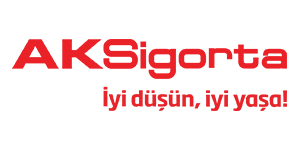- Customer Success Stories
- Aksigorta

Turkish insurer achieves real-time fraud detection

SAS combats fraud and enables faster processing of genuine claims.

66%
Increase in Aksigorta's fraud detection rate
Aksigorta achieved this using • SAS® Detection and Investigation for Insurance
Aksigorta uses advanced analytics to increase fraud detection rate by 66%
Insurance fraud is a major problem on a global scale, and the Turkish insurance market is no exception. An estimated 10% of insurance claims in Turkey are fraudulent, costing insurers US$591 million annually.
Aksigorta, one of Turkey’s leading insurance companies, decided to give top priority to fighting insurance fraud because of its direct effect on profitability and pricing. With 3 million customers, the P&C insurer sought an end-to-end fraud management platform to increase prevented fraud, detect organized fraud and provide real-time integration with existing systems.
It used to take our investigators six months to expose cases of organized fraud. SAS allows us to do it in 30 seconds.Yalcin Terlemez IT Division Manager Aksigorta
Like many insurers, Aksigorta once relied heavily on business rules and experience to detect fraud. Although this method provides simplicity, fraudsters can easily learn the rules and devise workarounds. Furthermore, rules are based on past fraud experiences, so they fail to detect new fraud techniques.
With SAS® Detection and Investigation for Insurance, Aksigorta benefits from an end-to-end fraud management platform. Capabilities ranging from data preparation to predictive analytics to financial reporting give the insurer a complete solution for preventing opportunistic and professional fraud. The platform also provides real-time fraud detection capabilities – a goal that insurers hope to achieve but rarely do.
Hybrid approach to fraud detection
Fraud detection starts with data. In insurance, having high-quality, well-integrated data generally leads to fewer false positives and greater accuracy when determining fraudulent activities.
In the early stages of the project, Aksigorta established an insurance fraud database with data aggregated from internal systems, third parties and public records. The database was integrated into existing systems, setting the stage for advanced analytics.
Aksigorta then set its sights on fraud detection. SAS enables a hybrid approach to fraud detection. Data scientists can supplement business rules with more advanced techniques including anomaly detection, predictive analytics, machine learning, artificial intelligence and social network analysis. Analysts can then determine the optimal threshold value and establish a hybrid score for each claim. The hybrid score is used to predict whether a claim is likely to be fraudulent – enabling investigators to focus on the most suspicious claims.
And while most insurers are striving toward real-time detection, Aksigorta is already there. Real-time integration provided by the SAS Platform produces a unique hybrid score for each claim in just eight seconds, quickly telling the claims handler which claims should be investigated. “This level of speed and accuracy is something few insurers in the world possess,” says Yalcin Terlemez, IT Division Manager at Aksigorta.
“This level of speed and accuracy is something few insurers in the world possess,” says Yalcin Terlemez, IT Division Manager at Aksigorta.
Aksigorta – Facts & Figures
3,000,000
Customers are insured by Aksigorta
10%
Of insurance claims in Turkey are fraudulent
8
Seconds to determine whether a claim should be investigated
Social network analysis exposes organized fraud
Each fraud detection technique produces a unique score, which is used to calculate the hybrid score. Aksigorta’s scoring framework is built around claim score, model score and network score. Each is calibrated with a severity level to indicate the likelihood of fraud.
The claim score is calculated using business rules. Business rules are good at tackling cases of known fraud. The most significant 81 business rules among 250 variables are used to flag suspicious claims.
Unknown fraud can only be discovered using advanced analytics. Aksigorta deploys predictive analytical models and anomaly detection techniques to discover patterns that emerge from previous fraud cases. The result of this analysis determines the model score for each claim.
The network score indicates the likelihood of organized fraud. A first in the Turkish insurance sector, Aksigorta uses the social network analysis capability of the platform to model relationships between entities in claims. This exposes cases of low-volume, high-loss fraud perpetrated by criminal gangs and professional fraudsters.
Social network analysis is one of the most powerful advanced analytics technique available. Aksigorta can use this method due to its extensive data network. The platform searches for hidden connections across the company’s insurance claims database as well as an equivalent database for the entire sector and the network activities of people filling claims through the Insurance Information and Monitoring Center.
“It used to take our investigators six months to expose cases of organized fraud,” Terlemez says. “SAS allows us to do it in 30 seconds.”
Fraud detection jumps by 66%
The hybrid approach has enabled Aksigorta to increase its fraud detection rate by a staggering 66%. Proven and captured fraud rates have also risen markedly, jumping from 2.4% to 6.2% over the past three years.
“These savings are passed along to the customer in the form of lower premiums,” Terlemez says.
Gains made in detection have improved investigations too. Lower false positives mean investigators can spend more time probing fraudulent claims, leading to better investigation quality, efficiency gains and faster processing of genuine claims.
Learn more about SAS insurance analytics software.
The results illustrated in this article are specific to the particular situations, business models, data input, and computing environments described herein. Each SAS customer’s experience is unique based on business and technical variables and all statements must be considered non-typical. Actual savings, results, and performance characteristics will vary depending on individual customer configurations and conditions. SAS does not guarantee or represent that every customer will achieve similar results. The only warranties for SAS products and services are those that are set forth in the express warranty statements in the written agreement for such products and services. Nothing herein should be construed as constituting an additional warranty. Customers have shared their successes with SAS as part of an agreed-upon contractual exchange or project success summarization following a successful implementation of SAS software. Brand and product names are trademarks of their respective companies.
